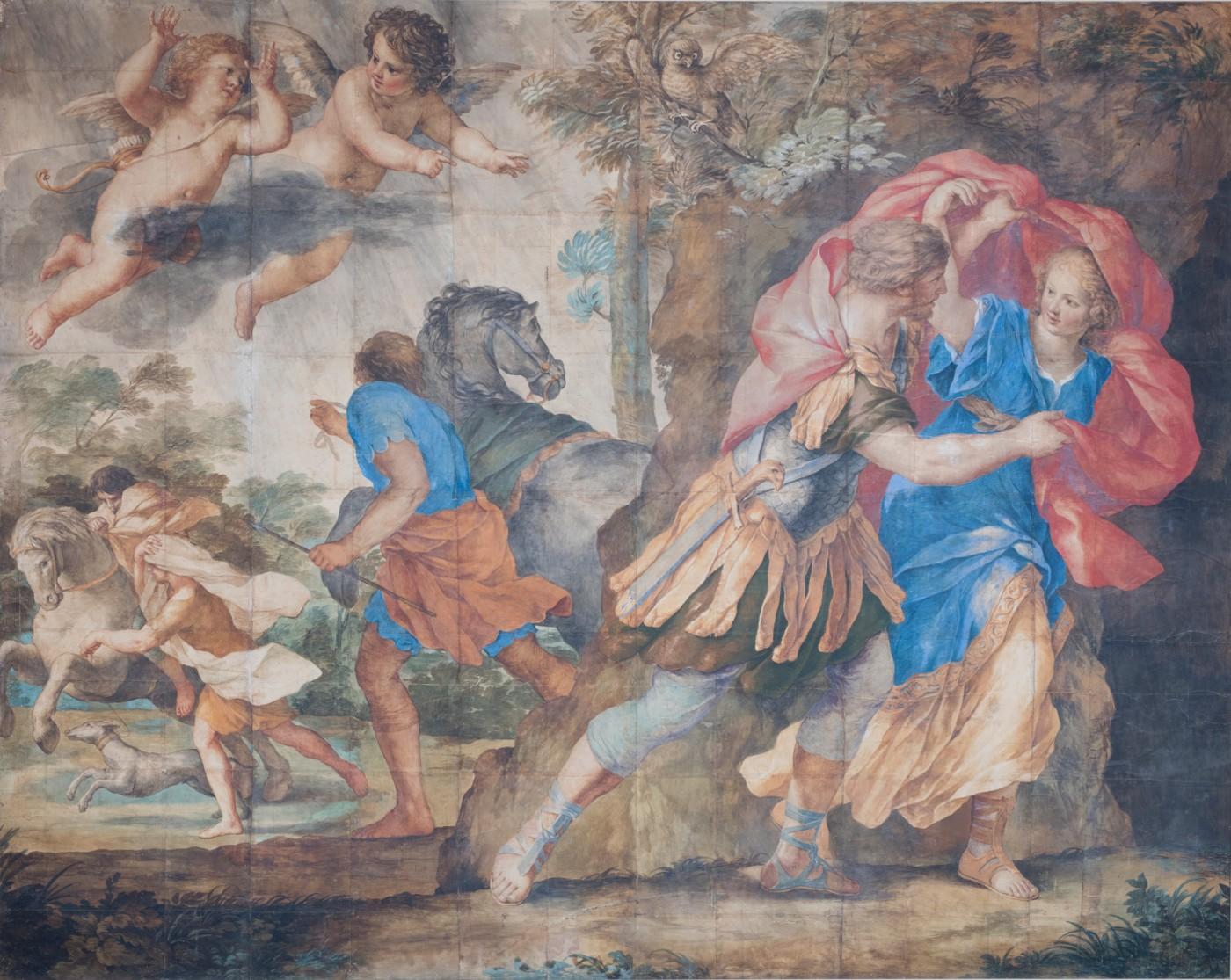Homer’s epic poem of the Trojan War, the Iliad, from the 8th century BCE, is the source for the story of Helen of Troy. Medieval poets eagerly updated the ancient tale and freely added commentary connecting the European nobility to their Trojan counterparts. In the visual arts, the primary focus of Le Roman de Troie (The Romance of Troy) was the conflict, and battle scenes were well suited to the large-scale, multi-paneled character of tapestry. It is notable then that Helen, an icon of beauty whose abduction provoked the Trojan War, figures so prominently in four of the weavings exhibited. They chronicle Helen’s fate from her arrival in Troy and marriage to Paris, to her return to Sparta and reconciliation with her first husband, Menelaus. Rich with detail, these fabulous silk and wool tableaux introduce us to contemporary court attire and to medieval stagecraft where the jewel-encrusted architectural framework calls attention to the principal subjects.
If the beautiful Helen was the genesis of conflict, Dido’s fate, derived from Virgil’s epic poem the Aeneid, 29-19 BCE, is considerably more personal and nuanced. Here the ill-starred love between Queen Dido of Carthage and the Trojan Prince Aeneas, who is destined to found the mighty city of Rome, involves two accomplished, ambitious protagonists, equal in every respect. With great imagination and verve, the Italian Baroque artist Giovanni Francesco Romanelli (1610–1662) conceived Dido as the central character of each dramatic scene. Aeneas plays a supporting role. From the banquet she hosts to welcome her guests from Troy, in which her love for the warrior is kindled, to the prince’s abandonment of Dido as he leaves Carthage to establish Rome, the emphasis of the cycle revolves around her destiny. And Romanelli’s grand and sympathetic presentation arouses our compassion for her undoing.

























![DEl Kathryn Barton [Australian b. 1972] the more than human love , 2025 Acrylic on French linen 78 3/4 x 137 3/4 inches 200 x 350 cm Framed dimensions: 79 7/8 x 139 inches 203 x 353 cm](/sites/default/files/styles/image_5_column/public/ab15211bartonthe-more-human-lovelg.jpg?itok=wW_Qrve3)



